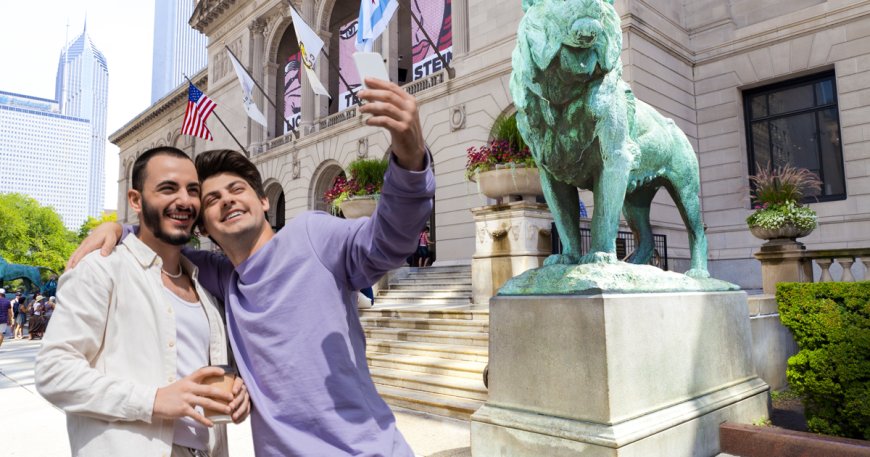5 must-see queer artists on exhibit at the Art Institute of Chicago
The Art Institute of Chicago’s gallery space spans 562,000 square feet, but a well-planned visit can reveal notable LGBTQ+ artists.


The Art Institute of Chicago’s permanent collection includes more than 300,000 works, but unless you’re earning a Ph.D. in queer art history, sifting through the digital archives and 562,000 square feet of gallery space might feel overwhelming. A well-planned visit reveals some of the most iconic LGBTQ+ artists throughout history while still leaving plenty of time to explore Chicago’s best gay neighborhoods.
Andy Warhol

The Pittsburgh-born Warhol merged commercial and fine art, saying in The Philosophy of Andy Warhol, “Being in good business is the most fascinating kind of art.” His “Four Mona Lisas” is a style he also used earlier with a portrait of Marilyn Monroe and later in his career with reigning queens. The self-portrait was based on a photo booth portrait, and later said, “I’d prefer to remain a mystery, I never like to give my background and, anyway, I make it all up different every time I’m asked.”
John Singer Sargent

Sargent is best known for his portraits but took paint to canvas to create this plein-air rendition of friend Charles Deering. Sargent stayed at Deering’s gorgeous Miami estate for two months to create the work. (Deering never married — the home, now the Vizcaya Museum and Gardens, was conceived by gay architect and interior designer Paul Chalfin.) Sargent defied the artistic trends of the time by defining his own style of realism and kept company with other queer notables, including Oscar Wilde and lesbian writer “Violet” Paget.
Felix Gonzalez-Torres

Gonzalez-Torres’s interactive piece begins with 175 pounds of wrapped candy. Viewers are invited to take a piece, diminishing the installation’s shape and weight, which refers to the artist’s partner, Ross Laycock, who died of complications from AIDS in 1991, followed by the artist in 1996. Gonzalez-Torres was part of the Group Material collective from 1987-1991, whose work was an intersection of creative disciplines, activism, and community engagement. A foundation established in his name upholds his intention “to maintain space for diverse and changing points of view and questioning around the work.”
Beauford Delaney

Born in Knoxville, Tennessee, Delaney is known as one of the most prominent artists of the 20th century and painted portraits of such luminaries as James Baldwin, Duke Ellington, and W. E. B. Du Bois. Through its color palate and composition, this self-portrait, painted in 1944, conveys the complexities of life as an out gay Black man in mid-century America. His final years were spent living in Paris, where he struggled with addiction and mental illness. where he died in an asylum. Like many marginalized artists, Delaney’s work gained recognition posthumously.
David Hockney

English-born David Hockney moved to Los Angeles in 1964, where he produced a series of works, including friends, benefactors, and collectors. Set in the couple’s sculpture garden, Hockney said of the work, “The portrait wasn’t just in the faces, it was in the whole setting.” But the Weismans weren’t too happy with the stoic result and decided not to keep it. Hockney moved to Normandy, France in 2019 — a convenient turn of events to ride out the pandemic and produce the illustrated book Spring Cannot Be Cancelled: David Hockney in Normandy, in collaboration with Martin Gayford. Hockney came out while studying at the Royal College of Art in London in the early ’60s, though homosexuality wouldn’t be decriminalized in England until 1967.

 Mark
Mark 





